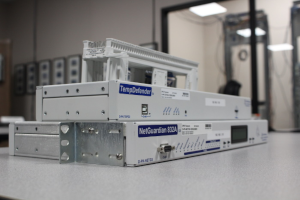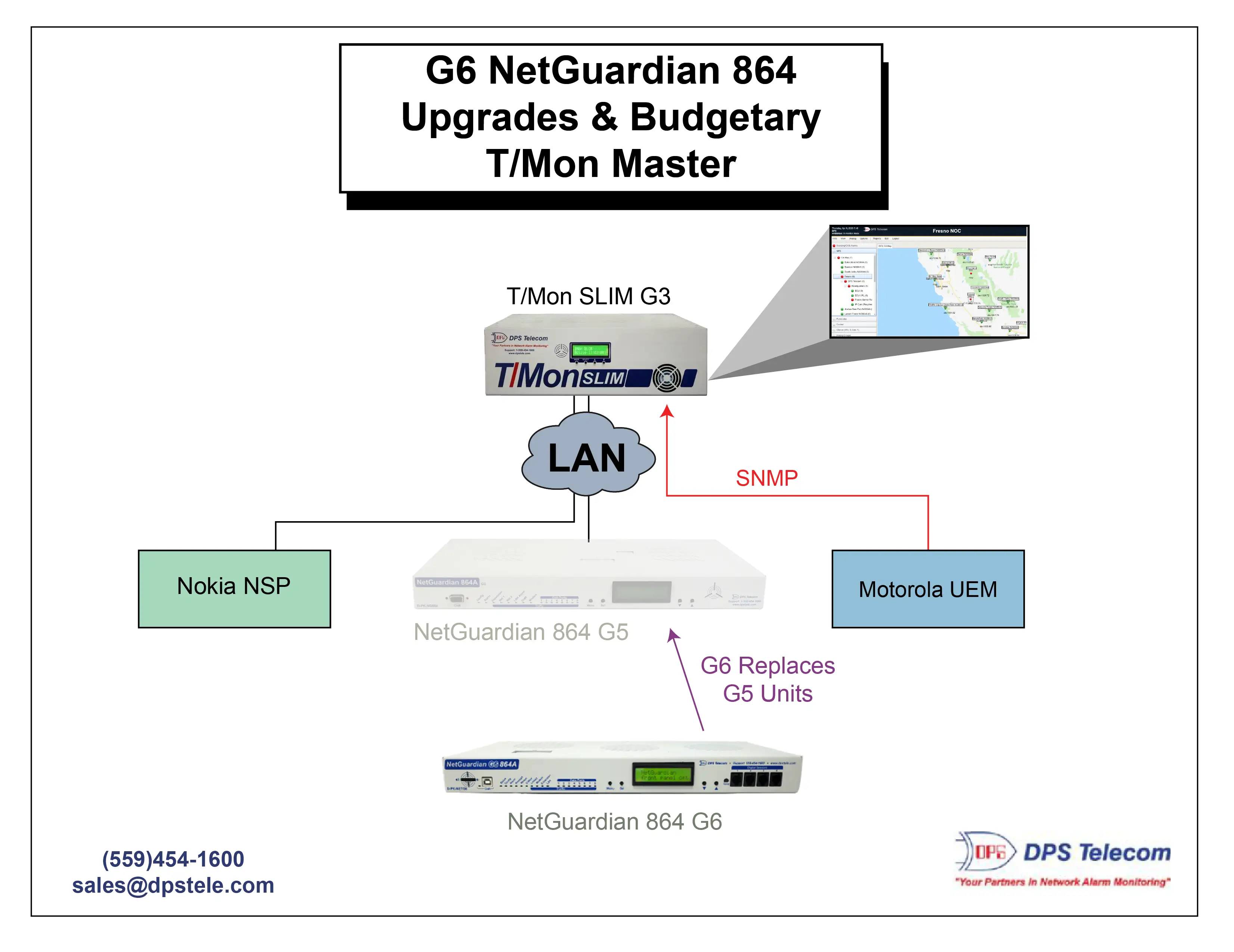Check out our White Paper Series!
A complete library of helpful advice and survival guides for every aspect of system monitoring and control.
1-800-693-0351
Have a specific question? Ask our team of expert engineers and get a specific answer!
Sign up for the next DPS Factory Training!

Whether you're new to our equipment or you've used it for years, DPS factory training is the best way to get more from your monitoring.
Reserve Your Seat TodayYears and decades of incremental expansion in your network can easily result in a patchwork of incompatible protocols, complicated integrations, and limited visibility. Your team might be grappling with slow, disconnected systems that let important alarms slip through the cracks. Or you may want to bring non-standard devices into your preferred head-end, like Motorola UEM or Nokia NSP, but not know how to make that happen.
Let's talk about the right approach here. Upgrading to the right devices offers a straightforward, cost-effective, and (most importantly) proven way to solve your network visibility challenges - without tossing out all the investments you've already made.

Over years of growth, you collect a mishmash of devices and systems at your remote sites. Your RTUs and other gear might still be functioning at some level, but they probably weren't designed for the demands of modern telecom and IP networking.
If you've tried quick fixes, you know that approach doesn't scale. What you need is a fully integrated, modern monitoring setup that puts you in complete control.
Essentially, you should keep your current network architecture intact, but replace outdated remote units with modern, intelligent alternatives. These updated devices should then connect to a centralized alarm master station. The master will communicate with your existing management platforms and other third-party systems.
Here's what it looks like when you have a cohesive system like this:
Suddenly, all your remote locations come into clear view through a single, unified dashboard. You eliminate silos, reduce guesswork, and stop relying on guesswork about whether your remote infrastructure is up and running.
DPS Telecom understands the benefit of keeping your current network in place but simply swapping out your aging RTUs. With the newest G6 platform, it's easy to replace any older DPS NetGuardians that aren't compatible with modern security standards. You can also connect them to a centralized T/Mon alarm master - such as the T/Mon SLIM G3 - that (optionally) also talks to your Motorola UEM, Nokia NSP, and other third-party systems.
This allows you to have:
As a result, all your sites become visible through a single pane of glass. No more silos, guesswork, or frantic phone calls just to figure out if your remote equipment is still operational.
The benefits of using a G6 NetGuardian and a T/Mon approach go deeper than simple device upgrades. Let's break down exactly how this setup eliminates your biggest headaches.

If you've been running NetGuardian 864 G5 units for years, moving to the G6 is a low-friction, plug-and-play experience. You get:
Best of all, the size and connector layout match the older G5 (and earlier) units in most cases. You won't have to retrain your entire field team or spend months redesigning racks.
The NetGuardian 864 G6 supports open standards, so you're not chained to a proprietary ecosystem. If you need SNMP to forward alarms to Motorola UEM, you can do so. If you need DNP3 for integration into a SCADA system, the G6 can handle that, too.
Since your G6 units all speak the same language, you avoid complicated development or specialized "translation" gear. This is especially important if you're bringing data into something like Nokia NSP, which demands well-structured SNMP traps.
The T/Mon SLIM G3 is the nerve center of your new monitoring strategy. It scales easily across many sites, mediates alarms from older devices, and gives you a single, map-based view of every location. This way, you can:
T/Mon has been proven over decades and is built specifically for telecom, utilities, railways, and public safety networks with critical reliability demands.
Using DPS RTUs as an example, you're under no pressure from DPS to replace all your G5 units at once. We're still currently selling G5 units (and will probably continue until we can no longer source parts). You can transition to improved G6 encryption at whatever speed your security mandates require.
As another example, you might have third-party RTUs that are discontinued and slowly failing. You can start by replacing only the ones that are failing or giving you the most headaches. Then, move forward in phases. That way, you protect your budget and avoid operational disruptions.
One of the biggest fears in any hardware upgrade is losing everything you've invested in previous gear. With DPS equipment, that's not an issue. G6 NetGuardians have:
Because the NetGuardian 864A G6 is backward-compatible (just like most other G6 models), you won't be forced to rewire entire racks or wonder if your old cable harnesses will fit. You can essentially unplug the G5 and plug in a G6. This allows your field techs to stay productive, and you avoid major downtime at your sites.
Some networks can tolerate an hour or two of downtime while others can't. If you're in the latter - say you manage 911 call centers, electrical substations, or critical backhaul for public-safety radio - then redundant monitoring is mandatory.
With real-world monitoring, you can't predict every environmental challenge. You might be deploying at mountaintop radio towers, inside desert huts, or on remote oil platforms. That's why DPS gear is designed, built, and tested in the United States under rigorous conditions.
By working with DPS, you're aligning with a manufacturer who has worked alongside telecom, utility, and rail clients for decades. This means your devices have a proven track record of surviving tough environments.
Sometimes, you just need a quick check on a remote site without firing up your entire alarm master. That's where the G6's built-in web interface shines. The user interface gives you:
This speeds up your workflow and lets your site techs operate with more independence.
Every network has unique demands, and you might have some specialized rules for how alarms should be escalated. T/Mon lets you build sophisticated filtering and automation:
Don't waste time chasing false alarms, or missing the serious alarms that require immediate action.
Plenty of vendors want to sell you gear. What sets DPS apart is a consultative, solutions-driven approach honed through decades of partnership with telcos, utilities, and government agencies:
DPS isn't just selling hardware. We're helping you build a long-term strategy for network visibility.
If you're dealing with disconnected alarm masters or complicated SNMP setups, it's time to upgrade. Talk with a DPS engineer to craft a custom proposal for your specific sites, taking into account your existing equipment, budget realities, and operational needs.
By using a G6 RTU in conjunction with T/Mon, you can finally shift from reactive responses to proactive control. By doing so, you ensure your team catches problems before they bring down service.

Andrew Erickson
Andrew Erickson is an Application Engineer at DPS Telecom, a manufacturer of semi-custom remote alarm monitoring systems based in Fresno, California. Andrew brings more than 18 years of experience building site monitoring solutions, developing intuitive user interfaces and documentation, and opt...